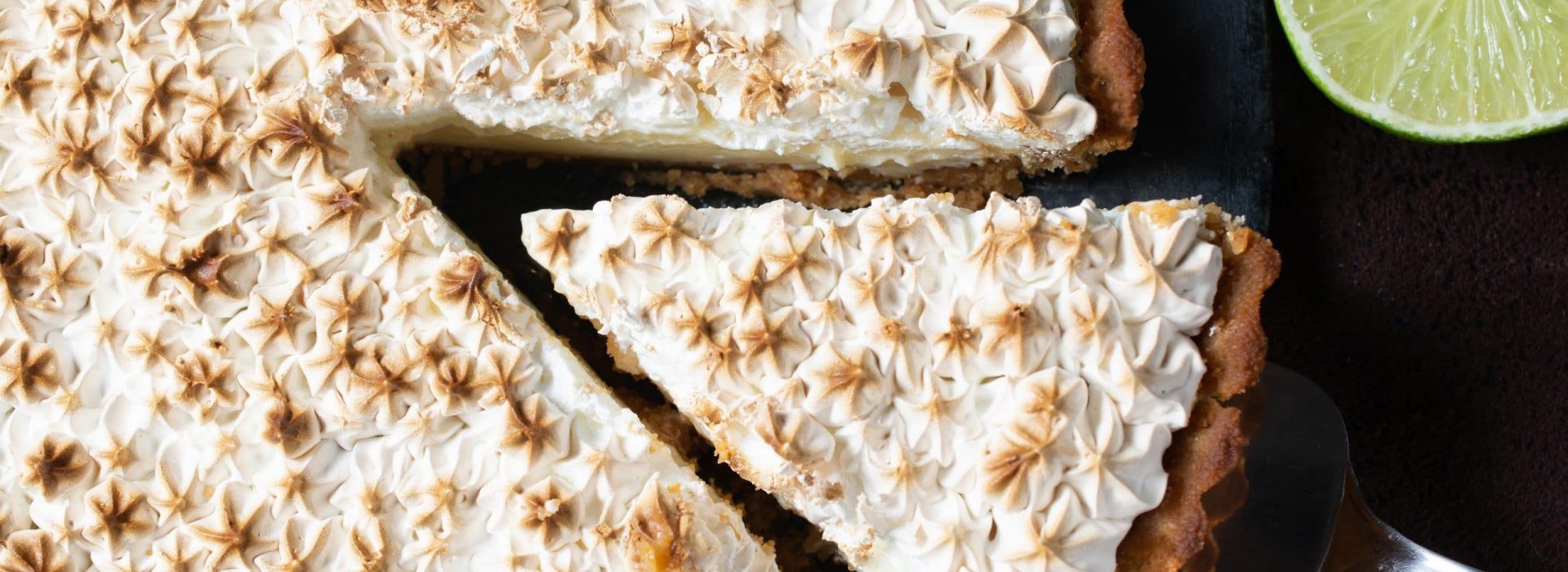The Mystery Case Surrounding the Lemon Meringue Pie Topping
The lemon meringue pie needs very little introduction. Described as baked sunshine, and noted as being Abraham Lincoln’s favourite White House Dessert, it’s not hard to see why. With golden meringue mountains sitting atop a lemon custard filling and shortcrust pastry, it’s one of the desserts that certainly catches the eye in any cake display.
The origins of the lemon meringue pie are less obvious. So we’ve put on our Sherlock Holmes’ hats and narrowed it down to three figures. The first suspect is an elusive baker from Switzerland, Alexander Frehse. The second, a puzzling botanist and zoologist from England, Emile Campbell-Browne. And last but not least, an American pastry chef and cooking teacher, Elizabeth Goodfellow. She operated a successful cake shop based in Philadelphia during the 1800s.
Some say Alexander Frehse created one of the first recipes for the lemon meringue pie. However there is little linked to him and we struggled to even find a date range for his work. We decided to move on to our next suspect, Emile Campbell-Browne, but found a similar story. While we did find a mention of him serving the lemon and meringue pie in England during the 1870s, we didn’t find much else linking him to the after-dinner treat. Thankfully, when we turned our investigation over to our final candidate, Elizabeth Goodfellow, we started to see some deliciously solid evidence supporting her role to play in the creation of the lemon meringue pie.
Elizabeth Goodfellow and the Lemon Meringue Pie
To start, Elizabeth Goodfellow was a well-known pastry chef who operated in Philadelphia between 1801-1851. Though her bakery changed location three times, it remained very well regarded. Her cakes and pies were said to be a popular feature for high society parties. Living close to the docks in a port city, Goodfellow was able to secure a wider range of ingredients like lemons. Consequently, she soon developed the lemon pudding which would become her signature dessert in the 1820s. This lemon pudding was a true delicacy at a time when lemons were a rarity. While her coveted lemon pudding was used in a variety of desserts, it was the version she served in a pie crust that won her the title of “the mother of lemon meringue pie.” But Goodfellow didn’t stop there.
Goodfellow’s Legacy
She was one of the first to open a cooking school in the US. Here she passed her food knowledge on to the daughters of well-to-do Philadelphian families for 30 years. Food historian William Woys Weaver describes her as being “one of the most creative forces in American cookery during the early nineteenth century”. While she never published a single recipe, she didn’t really have to. One of her pupils, Eliza Leslie, would go on to author countless cookbooks where she’d acknowledge her old instructor time and time again. But there’s a catch… We couldn’t find any mention of adding the classic meringue topping to the Goodfellow lemon pie! Even in the issue of Leslie’s 1857 book which lists the famous recipe there was nothing.
So where does this leave us? It seems we’ve ruled out all of our lemon meringue pie suspects, and we’re fresh out of evidence. Unfortunately, the true pie creator remains at large. But we are hopeful that over time more evidence will come to the surface. In the meantime, we recommend you not letting this influence your appreciation for what remains one of the best pies going around.





